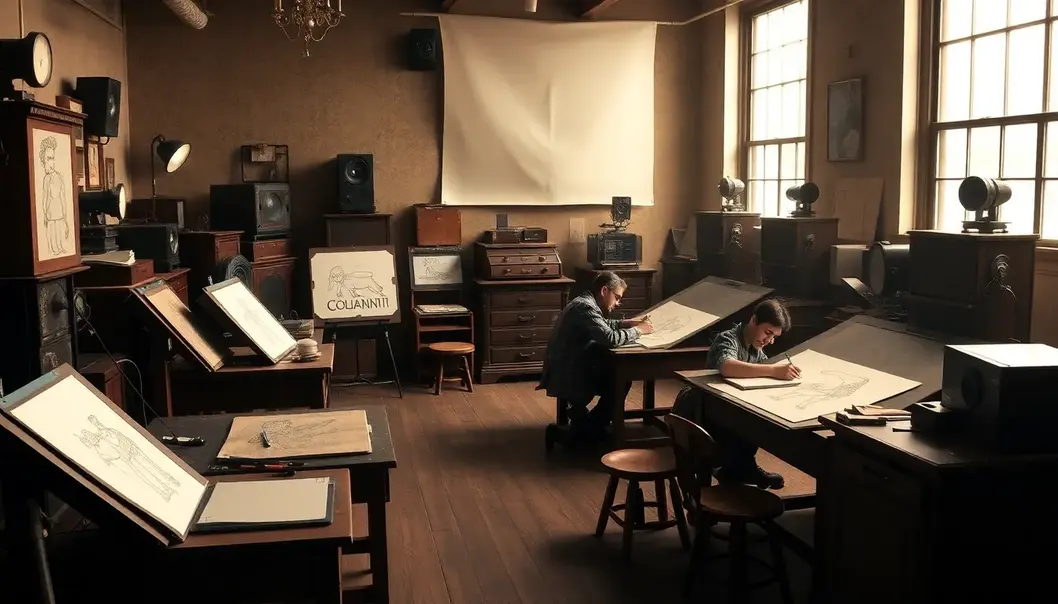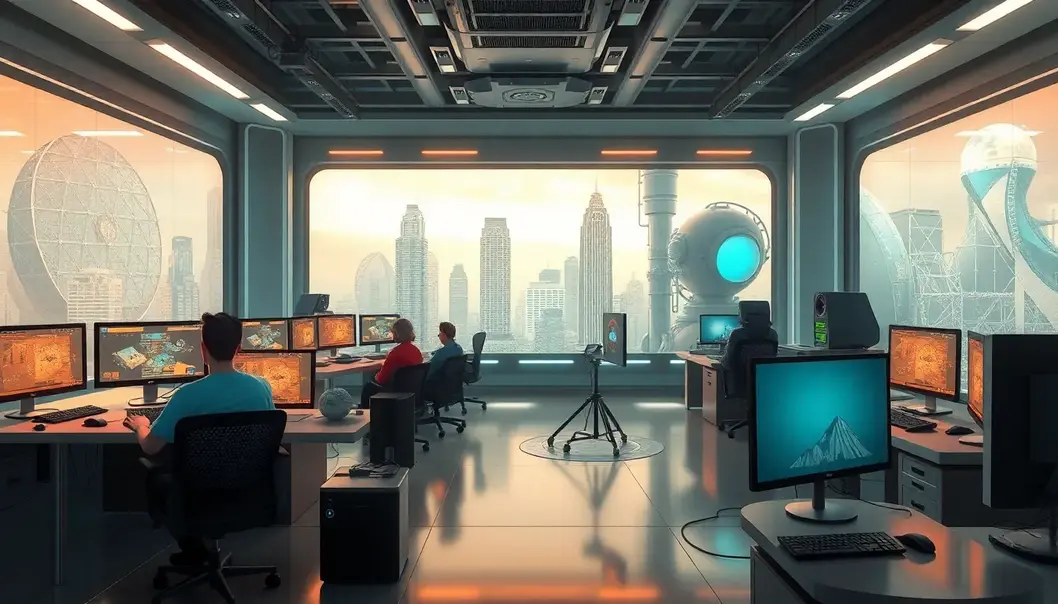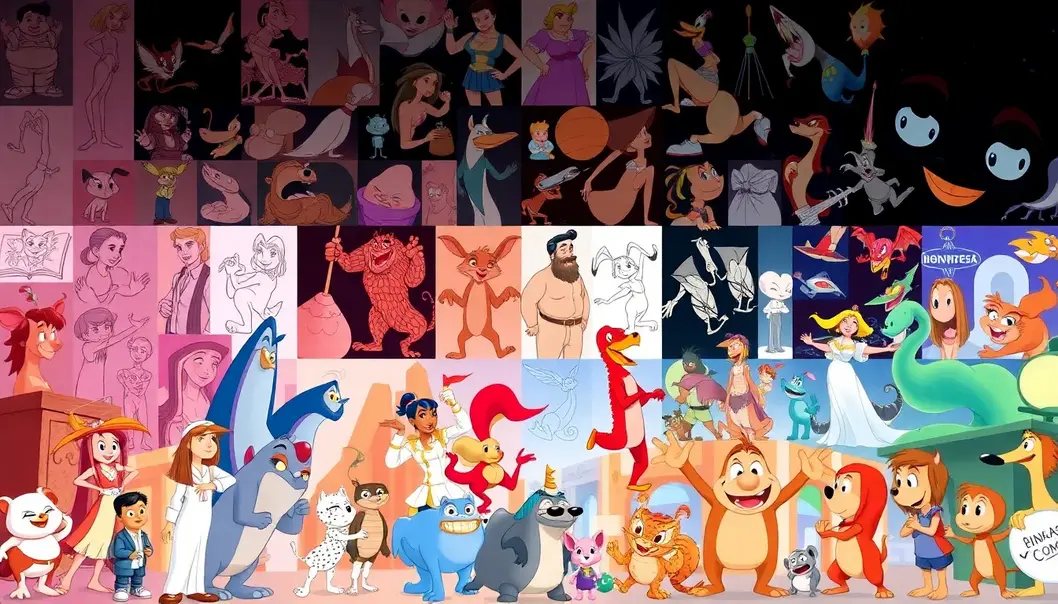Animation is no longer just a realm for Saturday morning cartoons. As technology and creativity have evolved, so has the world of animation, blossoming into a dynamic art form that captivates audiences worldwide. What started with simple hand-drawn sketches has transformed into a multi-faceted medium leveraging CGI and beyond. Young adults today enjoy a tapestry of animated experiences that echo cultural shifts and technological advancements. Let’s dive into how animation has metamorphosed over the decades, becoming a powerful tool in both entertainment and storytelling.
The Golden Age: From Sketches to Celluloid

The early 20th century heralded the dawn of animation’s Golden Age, a time when creativity flowed from the tip of the artist’s pencil to flicker with life on the big screen. This foundational period was a testament to the power of hand-drawn techniques and the revolutionary transition to celluloid, setting the stage for animated storytelling as we know it today.
In the initial years, the art of animation was labor-intensive, with artists intricately sketching each frame by hand. This meticulous process required not only skill but an immense amount of patience and dedication. As animators sought ways to streamline and enhance their work, the invention of celluloid transformed their craft. Celluloid, a transparent sheet upon which artists could draw or paint images, allowed for layers of creativity to unfold. By placing cells on top of static backgrounds, animators introduced motion and fluidity that were previously unimaginable.
Walt Disney emerged as a towering figure during this era. His vision transcended the contemporary limitations of storytelling, as he aspired to infuse deeper narratives and emotions into animated films. Disney’s pioneering spirit led to the creation of “Steamboat Willie” in 1928, starring Mickey Mouse, an iconic character that would become synonymous with the brand and animation globally. The synchronized sound in “Steamboat Willie” was groundbreaking and heralded a new chapter in drawing audiences into a richer, more immersive world.
In 1937, Disney’s innovation reached new heights with “Snow White and the Seven Dwarfs,” the first-ever full-length cel-animated feature film in history. This landmark production was a triumph of artistic innovation and technical mastery, combining vivid colors and compelling storytelling that captivated audiences worldwide. It laid a blueprint for future animated endeavors, proving that animation could achieve the same emotional depth and narrative complexity as live-action films.
Other key figures, like Max Fleischer and his creation, “Betty Boop,” further diversified the animation landscape. Fleischer was instrumental in developing the rotoscoping technique, where artists trace over live-action movements, bringing a level of realistic fluidity to animated characters. This was evident in films like “Snow White,” which uniquely combined realistic and fantastical elements.
The Golden Age of animation was hallmarked by groundbreaking innovations and an unyielding passion for storytelling. It set a foundation upon which the modern animation industry continues to build and thrive. The journey from hand-drawn sketches to dynamic celluloid imagery caused animation to leap into the collective cultural consciousness—forever changing how stories were told and paving the way for the digital revolutions that would follow in the subsequent decades.
Digital Domination: CGI, Stylization, and New Frontiers

The advent of digital technology marked a significant turning point in the world of animation, ushering in an era where computer-generated imagery (CGI) reigns supreme. Unlike traditional hand-drawn techniques, CGI allows animators to create more lifelike and visually stunning worlds, reaching levels of realism previously thought unattainable. Major films have pioneered this shift, setting new standards for visual storytelling. One prime example is the groundbreaking film that merged sophisticated CGI with a compelling narrative, drawing viewers into meticulously designed realms.
Beyond the lifelike allure of CGI, digital tools have expanded the stylistic possibilities of animation. Contemporary creators often blend CGI with other artistic styles to achieve striking visual effects. An example is the distinct aesthetic of stop-motion, where technology enhances the meticulous frame-by-frame technique, giving rise to visually arresting films that resonate with audiences worldwide. Japanese anime, with its distinct blend of traditional art and digital enhancement, continues to influence global animation trends, showcasing how nuanced storytelling can be paired with vibrant imagery.
Furthermore, digital platforms have fundamentally shifted how animated content is delivered and consumed. The prevalence of streaming services means audiences have unprecedented access to a diverse array of animated series and films. These platforms not only cater to traditional audiences but also offer space for innovative content that might not align with conventional cinema. By enabling creators to bypass traditional distribution channels, digital platforms empower more storytellers to share their visions with global audiences.
Prominent series exemplify this trend, where rich character development unfolds across visually dynamic settings, appealing to both domestic and international audiences. The result is a vibrant landscape where animation can be daring and experimental, unbounded by traditional industry constraints.
In this digital age, the landscape of animation continues to evolve, with new technologies promising even more revolutionary changes. Artificial intelligence and machine learning are poised to further transform animation, potentially offering sophisticated tools to automate complex tasks and unleash new creative possibilities. As the boundaries between different styles and techniques blur, the future of animation looks increasingly dynamic. This evolution represents not just a technological leap but also a broader cultural shift, with animation becoming a powerful medium for storytelling that transcends language and borders.
Final words
Animation has come a long way since the early hand-drawn frames. Each decade has added layers of depth and sophistication, reflecting broader cultural and technological shifts. For young adults, animation is a testament to how storytelling can evolve, pushing the boundaries of imagination and innovation. As we move forward, it’s exciting to ponder what the next chapter will hold in this ever-expanding art form.
Ready to dive deeper into animation? Visit our website for courses, tutorials, and more!
Learn more: https://www.animationhub.com
About us
AnimationHub offers a rich library of resources, courses, and exclusive tutorials designed for aspiring animators. Whether you’re just starting out or looking to refine your skills, AnimationHub provides the tools and knowledge you need to succeed in the animation industry.



